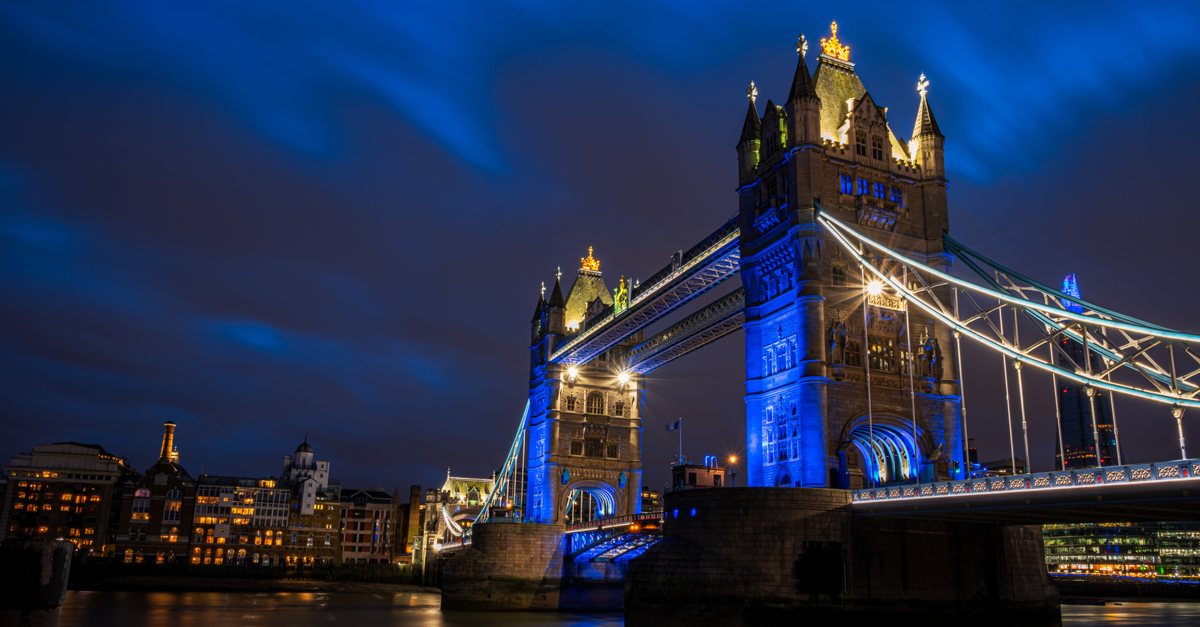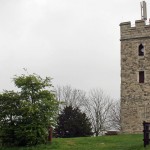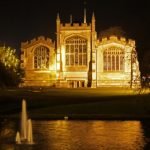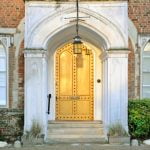
A quick guide to London
In this article, we will look at the makeup of London, The History of London and then you can find links to the different boroughs of London at the end of the Article.
London is a large multi-cultural city that is situated in south-east England and lies on the banks of the River Thames. It’s both the capital city of England and the United Kingdom and is by far the biggest single metropolitan area throughout the whole of the country. The city has a long, rich and diverse history stretching back more than 2000 years. London is recognised as one of the most important financial centres and significant cultural hubs throughout the entire world. The Greater London Area consists of 32 metropolitan boroughs that cover a total of 1,572 square km (607 square miles). At the 2011 UK Census, the population for the whole of metropolitan London was recorded as 8,174,100.
Want your business to get more online presence? Add your Business to our London Business Directory
The History of London
Roman Times
It’s generally accepted by historians that it was the Romans who founded London around 50 AD. However, there is a school of thought that an Iron Age tribe, the Trinovantes, inhabited the area from about 1100 BC up to the Roman invasion of AD 43. However, despite extensive archaeological excavation, there has been no evidence found to date to support the theory.
The town of Londinium was established by the Romans about four years after the AD 43 invasion. It was founded at a strategic location on the Thames where the river was at a narrow point but still gave easy access to much of Europe. A bridge across the River Thames was the first structure built by the Romans but soon a settlement began to spring up around the crossing. Early Roman London occupied a relatively small area, roughly equivalent to the size of Hyde Park i.e. about 140 Hectares.
Around AD 60, London was razed to the ground by the indigenous Iceni people, led by the fabled Queen Boudica. However, the rebellion was soon crushed and the Romans quickly rebuilt the town, only this time more in the style of a typical Roman settlement. The new Londinium boasted major public buildings that included temples, bathhouses, a large amphitheatre and a significant fort to house its legions of soldiers. In the decades that followed, Londinium grew rapidly.
London Becomes the capital of Roman Britannia
During the 2nd century, Londinium rose to great prominence and replaced Colchester as the capital of Roman Britannia. During this period, it’s estimated that the population may have peaked at some 60,000 inhabitants. The populace was ethnically diverse, consisting of not only native British but peoples from across the Roman Empire, including those from continental Europe, the Middle East, and North Africa.
Sometime between the late 2nd and early 3rd century, the Romans decided that a massive defensive wall around the landward side of the city was needed. The wall was around 3 km in length, 6 m high, and 2.5 m thick. In the late 3rd century, Londinium began to experience occasional raids by Saxon pirates. This led to the construction of another wall along the River Thames to complete the city’s defences. By the early 5th century, the Roman Empire was in rapid decline.
In AD 410, the Roman occupation of Britain came to a sudden end. As a result, London went into a period of rapid and sustained decline. The London Wall that had defined the old city was gradually demolished over the years, with some lengths being incorporated into other buildings. Today, there are still some short but substantial sections of the wall still standing at a few locations around the city.
The Middle Ages – The History of London
After the Romans deserted London around AD 410, the city was largely abandoned. A relatively small number of people probably lived inside the old walls, but London ceased to be a city. However, in the late 5th (or early 6th) century, a new town began to take shape outside the old city walls, somewhere between the present-day Strand and Trafalgar Square. The new London now went by the Saxon name of Lundenwic, with the ‘wic’ suffix denoting a trading settlement. It was much smaller than Roman London, with a population of some 10,000 to 12,000 inhabitants.
Saxon London mostly consisted of wooden huts with thatched roofs. Archaeological evidence suggests that both blacksmiths and weavers were prominent occupations among the general population. The main export from Saxon London was wool, while imports included wine, luxury food items like grapes and figs, and pottery. Slaves were also a commodity that was bought and sold in London during these times.
The Viking invasion of London
During the 9th century, London suffered repeated attacks from Viking raiders. Eventually, the Danes invaded and established themselves as settlers in the London area. They brought new trade and business to the city, operating a port on the Thames. London was transformed and it was turned into the first truly urban centre of England. The old settlement of Lundenwic became known as the ealdwic or “old settlement”, a name which survives today as Aldwych.
In 883, King Alfred the Great retook the city to re-establish English control. The old Roman walls were repaired and the defensive ditches re-cut. Much of the population moved back inside the confines of the old walled city for defensive reasons. In 1016, Cnut the Great gained control of the whole of England, including London. In 1042, Edward the Confessor, the step-son of Cnut, became king. He built both Westminster Abbey, the first large church of its kind in England, and the original Palace of Westminster during the mid-11th century. Edward’s death led to a succession crisis, and ultimately the Norman invasion of England.
The new Norman regime quickly established new fortifications around the city in order to control the native population. This included the imposing Tower of London, built at the eastern end of the city. The initial structure was timber but this was replaced by a stone castle, which was completed in 1100, after 22 years of construction. The White Tower, as it was originally known, was the first stone fortification to be built in England. In 1097, William Rufus, the son of William the Conqueror began the construction of Westminster Hall and then the Palace of Westminster.
Construction begins on the original London Bridge
In 1176, construction began on the original London Bridge which was built on the site of several earlier timber bridges. The bridge was completed in 1209 and would last for 600 years. It remained the only bridge across the River Thames until 1739.
In June 1348, the first known case of bubonic plague (later becoming known as the ‘black death’) was recorded in England when an ailing seaman arrived at Weymouth, Dorset, from the continent. By the Autumn, the plague, thought to be spread by flea infected rats, had reached London, and by the summer of 1349, it had spread across the entire country. Best estimates by historians on the death toll caused by the epidemic in London, and the rest of the country, were that almost 50% of the population was wiped out. For London, this meant the death toll could have been as high as 50,000 people.
In the following years, the decrease in population caused a shortage of labour, a rise in wages, and a subsequent rise in the cost of living. However, wage rises for the poorest bonded workers were resisted by landowners, which caused deep resentment among the lower classes. The Peasants’ Revolt of 1381, whereby a group of farmworkers led by Wat Tyler, stormed London, was largely a result of the on-going bitterness felt by those at the very bottom of society. Though the rebellion was suppressed, after Tyler was stabbed to death during the struggle, it proved to be the catalyst for ending serfdom in England.
Tutor, Stuart and Georgian Times
By the 16th century, London had become the principal early centre of Protestantism in England. Its close commercial connections with the Protestant heartlands of northern Europe, its large number of highly educated citizens and the fact that London was the centre of the English print industry, all contributed to it becoming a haven for reformists, including those seeking religious reform.
Before the Reformation began in 1534, more than half of the property and land in and around London was owned by religious orders of the Catholic denomination. Henry VIII’s “Dissolution of the Monasteries” meant that a great amount of property was seized and taken out of Catholic church ownership by royal consent.
In 1558, the coronation of Queen Elizabeth ushered in the Elizabethan era and the high point of the English Renaissance, which had been started by her father Henry VIII. The late 16th century, saw William Shakespeare and his contemporaries live and work in London, which rates arguably as the most significant period in the city’s and county’s cultural history.
In 1642, the start of the 9 years English Civil War between King Charles I, and parliament began in the governance of England. In 1643, the royalists made their only attempt to capture London. Their army was met 6 miles west of St Pauls, by a much larger parliamentary army, so the royalists were forced to withdraw.
In 1665, the last major epidemic of the bubonic plague occurred in England. A major outbreak of the disease had struck London roughly every 20-30 years, since the first mid-14th-century epidemic, killing around 20% of the city’s population each time. The Great Plague of 1665 killed an estimated 100,000 people – almost a quarter of London’s population – in 7 months. However, an unexpected momentous event was about to occur which would help rid the city of the disease.
The Great Fire of London
On the 2, September 1666, a fire that had started in a baker’s shop in Pudding Lane swept through the narrow, squalid and cluttered medieval streets of the city of London. The fire took hold across a large slum area of the city, whereby most houses were illegally constructed with timber and thatched roofs. The fire quickly turned into a raging inferno. It consumed more than 13,000 houses, the homes of some 70,000 inhabitants, and a great number of public buildings, including St Paul’s Cathedral.
The true death toll is unknown but only six deaths were officially recorded. The true death toll is likely to have been ‘thousands’ but at the time there were no birth or death records kept of the general population, especially the poor. The incident was dubbed ‘The Great Fire of London’ and is thought to have cost some £10 million, at a time when the income for the whole of London, was estimated at only £12,000.
In 1675, work began on rebuilding St Pauls, a task that was to take 36 years. In the latter part of the 17th century, many wealthy Londoners could obtain piped water for the first time as new infrastructure was built and improved following the ‘Great Fire’. In 1685, oil lamps lit some of London’s streets for the first time. By now hackney carriages were becoming a common sight on the streets of London. In 1694, the privately-owned Bank of England was formed. It moved to Threadneedle Street in 1734 and was not nationalised until 1948.
The rebuild of London
The population of London rose from about 600,000 to 950,000 during the course of the 18th century. By the end of the period, the suburbs had spread north along Tottenham Court Road and north-west towards Paddington. The fashionable suburbs of Islington and Chelsea were established. In the east, urbanisation had spread to Stepney, Ratcliffe, Limehouse and Wapping. South of the Thames, the city had extended to Bermondsey, Rotherhithe, Walworth and Kennington.
A number of major hospitals were founded in the city during the first half 18th century included; Westminster in 1720, Guys in 1724, St Georges in 1733, London in 1740, and Middlesex 1745. A number of important buildings were also constructed in the same period including; Buckingham Palace in 1703, built for the Duke of Buckingham, Marlborough House in 1711, the British Museum in 1753. Mansion House was also built in 1753 as a residence for the Lord Mayor of London. New bridge crossings of the Thames were also built at Westminster (1749) and Blackfriars (1770), greatly improving the connectivity of the city.
The 18th-century saw London dogged by crime. The law was enforced by private, often corrupt, individuals with little interference from the state. Penalties for wrongdoing were harsh, with the death penalty often being applied for fairly minor crimes. Public hangings were common and were popular public events. The Bow Street Runners were established in 1749 by Judge (and author) Henry Fielding as the capital’s first quasi-police force. They operated out of Bow Street magistrates court, hence the nickname of the ‘Bow Street Runners’ given to them by the general public.
In 1761, the Board of Commissioners was established to clean up and bring improvements to the city. Over the next 5 years, great swathes of the old Roman walls, which had been instrumental in the past defence of the city, were demolished.
The 19th century
During the course of the 19th century, London was transformed into the world’s largest city. Its population of almost 1 million in 1800, had risen to 6.5 million by the end of the century. Many of London’s most famous landmark buildings and features were constructed during the period, including Trafalgar Square, Big Ben and the Houses of Parliament, the Royal Albert Hall and the Victoria and Albert Museum. While a fortunate few grew wealthy, most people lived in overcrowded and unsanitary slum conditions.
In 1829, Home Secretary, and future prime minister, Robert Peel decided to establish a Metropolitan police force in order to maintain the law throughout the city. ‘The police were nicknamed by the general public as ‘peelers’ or ‘bobbies’ after Peel, the latter being a term still used today. The existing enforces of the law, the ‘Bow Street Runners’ were disbanded, making way for progress.
In 1836, the first railway line opened in the city, between London Bridge and Greenwich. This was soon followed by the opening of major terminal stations, including Euston station (1837), Paddington station (1838), Fenchurch Street station (1841), Waterloo station (1848), King’s Cross station (1850), and St Pancras station (1863), eventually linking London to every corner of the country. The advent of the railway saw the gradual exodus of the wealthy to the ever-expanding suburbs, who were now able to commute to the inner city for work. The less well-off were left to dwell in the squalid, slum inner-city areas.
Queen Victoria Moves In
In 1837, Queen Victoria moved to Buckingham Palace, the former residence of the Duke of Buckingham. Buckingham House had actually been acquired by George III some 75 years earlier. It underwent an extensive programme of extension and refurbishment before becoming the royal residence.
In 1851, the Great Exhibition, which had the Prince Consort, Albert, as its chief promoter, was held at the purpose-built Crystal Palace. The ‘Palace’ took the form of a massive glass house, 1851 feet (564 m) long by 454 feet (138 m) wide. The event attracted more than 6 million visitors from across the world.
The exhibition was a great success and achieved the desired effect of showcasing Britain as the world’s greatest industrial superpower. The glasshouse structure was later moved and re-erected at Sydenham in south London, an area that was renamed “Crystal Palace”. Unfortunately, in 1936 the building was destroyed by fire.
In 1855, the Metropolitan Board of Works (MBW) was created to provide the city with the necessary infrastructure to cope with its rapid population growth. One of its first tasks was addressing London’s sanitation problems as raw sewage was still being pumped directly into the River Thames.
In xxxx, Parliament gave consent for the MBW to construct the city’s first proper sewer system. The massive civil engineering project saw more than 2100 km of tunnels and pipes laid through London’s busy streets. With the new sewerage system complete, the death toll due to waterborne diseases such as cholera dropped dramatically. Mostly due to the fact the supply drinking water was now much less contaminated.
In 1863, construction of the London Underground began. The initial priority was to connect train stations on the overground rail network.
In 1888, the new County of London was established which was administered by London County Council. This was the first elected London-wide administrative body and replaced the Metropolitan Board of Works. In 1900, the county was subdivided into 28 metropolitan boroughs. Each had its own administration, which formed the second tier of local government.
Early 20th Century – The History of London
During the early part of the 1900s, London’s population continued to grow, meaning public transport had to be correspondingly expanded. A large tram network was constructed by LCC Tramways, who began operating the county’s first motorised transport service in 1903. Extensive improvements to London’s rail network, including the underground, were also carried out during the same period.
London in WWI
During WW I, London experienced its first bombing raids. These were carried out by German Zeppelin airships and killed around 700 people in all. The period after WWI saw a continuation of London’s rapid geographical expansion. Demand for new suburban semi-detached housing superseded the need for terraced houses. This was facilitated not only by the continuing expansion of public transport services but by some degree, the rise of private car ownership. London’s suburbs continued to expand beyond the boundaries of the County, and into the neighbouring counties of Essex, Hertfordshire, Kent, Middlesex and Surrey.
Like the rest of the country, London suffered severe unemployment during the Great Depression of the 1930s. However, London’s population continued to grow, partly due to the large numbers of Jewish immigrants fleeing Nazi Germany who came to settle in the city. In 1939, the population of London reached a new high of more than 8.6 million.
London in WWII
During World War II, London, along with many other British cities suffered severe damage as a result of the extensive bombing campaign by the German Luftwaffe, commonly known as the Blitz. By the time the first of the bombing raids took place, hundreds of thousands of London’s children had already been evacuated to the countryside. Underground air raid stations were quickly established as places of shelter for the general population to escape to during bombing raids.
The heaviest bombing of London took place between September 1940 and May 1941. During this period, London was subjected to 71 separate raids with more than 18,000 tonnes of high explosives being dropped on the city. Fortuitously, some significant buildings, such as St. Paul’s Cathedral, managed to escape the bombing.
With Hitler’s attention turned elsewhere during the German war effort, the regular bombing raids of London ceased for a period. However, in early 1944, the city came under heavy attack once, this time from the V-1 and V-2 rockets, launched from Nazi-occupied Europe. The attacks only ended in 1945 as launch sites were gradually captured by advancing Allied forces. By the end of the war, some 30,000 Londoners had been killed and more than 50,000 seriously injured, tens of thousands of buildings destroyed and hundreds of thousands of people made homeless.
The Modern Era – The History of London
In 1948, in an attempt to help lift the post-war depression felt across the UK and the rest of Europe, the Summer Olympics were awarded to London and held at Wembley Stadium. Despite the austere times, the games were deemed an outstanding success and helped to re-establish London’s reputation as one of the world’s great cities.
In the immediate post-war years, one of the great issues facing London, not unsurprisingly, was a housing shortage. In the 1950s, the arrival of large numbers of immigrants, mostly from the Commonwealth, who were needed to help rebuild post-war Britain, exacerbated the housing problem in the Capital. As a result, the authorities decided that high-rise blocks of flats, which could be built relatively cheaply and quickly, were the answer. During the 1950s and 60s, the skyline of London altered dramatically as many tower blocks were constructed throughout the Greater London Area.
In the early 1960s, the emergence of British ‘pop’ music took the world by storm. Groups like ‘The Beatles ‘and ‘The Rolling Stones’, helped to elevate London’s status as the youth culture capital of the world. Soho’s Carnaby Street quickly became a household name, since many of the new pop groups worked for the clubs in the area. It became the destination to be seen, especially for buying clothes, as many of the new trendy clothes boutiques set up shop there. It will be forever associated with 1960’s ‘Swinging’ London.
The Creation of Greater London
In 1965, a redrawing of London’s Metropolitan Green Belt was made to accommodate the 1 million population decrease that had occurred since the beginning of WWII. The plan also saw the abolition of both the old County of London and the London County Council.
The much larger area of Greater London was established, along with a new administrative body, the Greater London Council (GLC) and 32 new London boroughs. The ‘City of London’, the historic financial sector of the Capital, which roughly occupies the area of the Roman Londinium settlement (approximately 1.12 sq. mile) was retained as a county, by far the smallest in the UK.
Between the mid-1960s and 80s, London’s traditional status as a major port declined dramatically as the old Docklands could not accommodate the new large modern container ships. The principal port operations for London moved downstream to the ports of Felixstowe and Tilbury. By the mid-80s, the docklands area had become largely derelict but was redeveloped into flats and offices. The Canary Wharf project at the Isle of Dogs was perhaps the flagship project. The Thames Barrier was also completed in the 1980s to protect London against tidal surges from the North Sea.
A series of political disputes between the left-wing GLC and the Conservative government in the early 1980s led to the abolition of the authority in 1986, with most of its powers being transferred to the London boroughs. In 2000, a London-wide authority was restored, with the creation of the Greater London Authority (GLA) by the then Labour government. The new authority had a directly elected Mayor and a London Assembly.
In 2000, London celebrated the beginning of the new millennium by staging a mega-exhibition at the purpose-built ‘Millennium Dome’ in Greenwich. The project was controversial and cited as a waste of money by many. However, another London project exceeded expectations. The ‘Millennium Wheel’, a gigantic Ferris wheel, now better known as the London Eye, was erected as a temporary structure, but is now a permanent fixture of London’s skyscape, drawing around four million visitors a year.
In 2012, London hosted the Olympic Games to great critical acclaim. In 2016, the number of visitors to the city hit a new record high of 37.3 million, making it one of the most visited cities in Europe.
London’s population is currently (2019) estimated to be 8.9 million, a rise of some 1.6 million since 2001. The rise in population is mostly due to migration to London from across the world.
You may like to Look at
The 32 Boroughs of London are:
Inner London
Royal Borough of Kensington and Chelsea
Outer London
Havering
Hillingdon
Hounslow
Royal Borough of Kingston upon Thames
Merton
Newham
Redbridge
Richmond upon Thames





